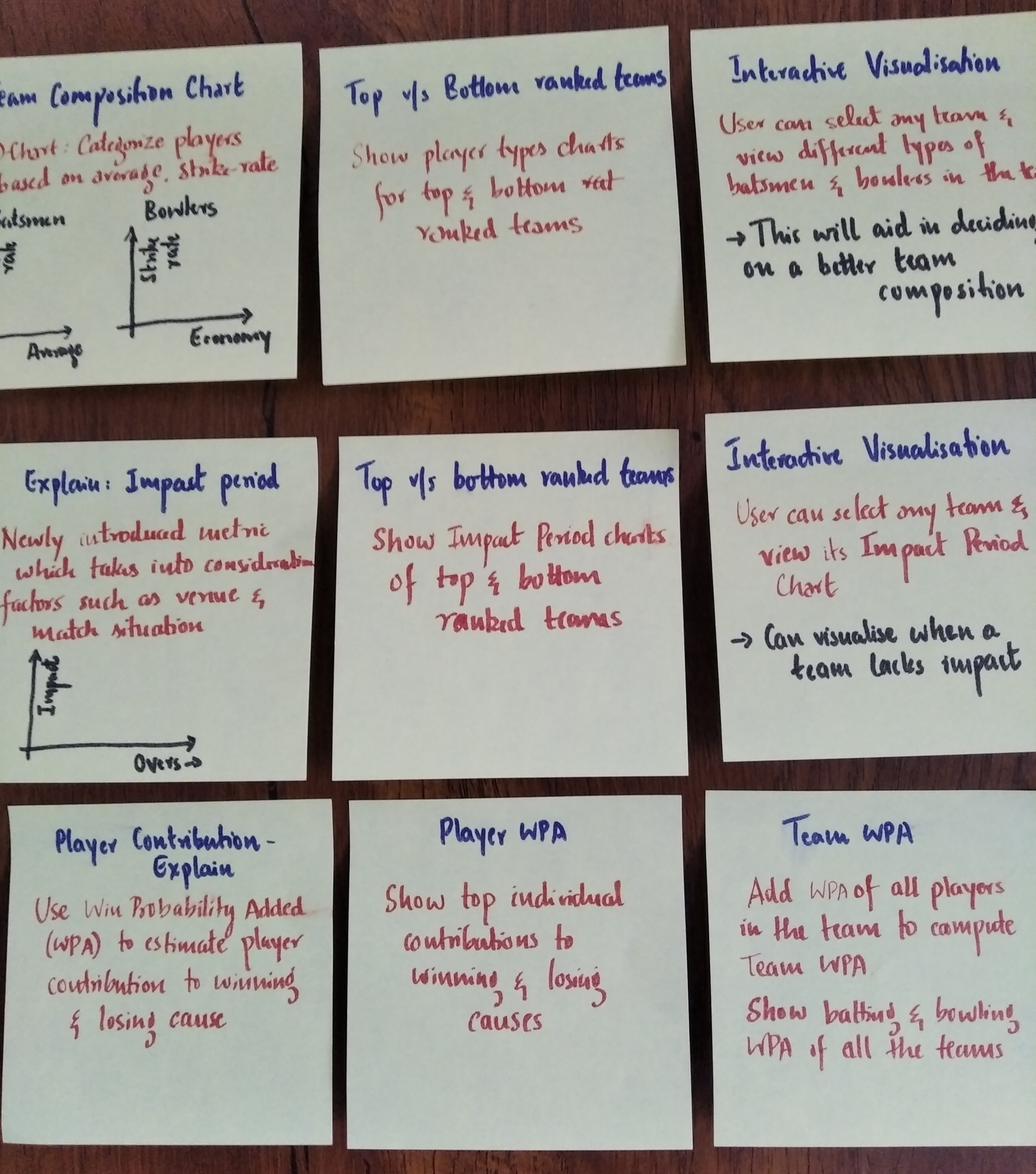IPL 2019: Who needs what to win ?
A Data Analytics based approach to selecting a winning team combination and playing the perfect T20 game.
December 2018
Why this project ?
Trends in recent years have shown that data guided decision making in sports has lead to some remarkable results in itself. This has added an entirely new facet to the sport. This process termed as Sabermetrics in now being used in a wide range of sports However until recently cricket has been reluctant to harness the potency of data analytics.
That brings us to the question of how to build an ideal T20 side. Are there certain player combinations and player roles that can maximise chances of winning ? In this article, we analyse data from T20 leagues from around the world to see if we can determine the all elusive winning formula. We study if there are any commonalities or underlying pattern in the team composition and the playing styles of the successful T20 teams from around the world. In particular, we look at the following aspects,
- Team composition: What constitutes the batting and bowling line ups of a successful T20 team ?
- Player Impact: How to assign specific roles to players during various phases of play in a T20 game ?
- Player contribution: A quantitative method of determining a player’s contribution to winning (or losing) cause.
By answering the above questions, we seek to build an ideal T20 team with the right combinations of players and specific roles assigned to every player in the team.
Storyboarding

Key observations from data
The batting and bowling charts of top and bottom ranked teams did show considerable contrast in terms of players performing well defined roles.
The batting and bowling impact charts provided key insights regarding the different phases of a game when players create impact. This input will be invaluable for team management while devising strategies to overcome a team’s weaknesses.
Evaluating a player’s contribution to winning or losing cause is a very challenging task and is often overlooked. In this process, players with better averages and strike rates may overshadow players who make decisive contributions to a winning cause. The player contribution methodology provides a quantitative method of evaluating a player’s contribution to winning or losing and can be an extremely useful tool to make better team selections.
Challenges faced and learnings from project
Data scraping
Quite often the most difficult part of a data-science project is data collection and pre-processing. The biggest lesson while doing this project was exactly that. The project required ball-by-ball data from all the major T20 cricket leagues in 2018. There was no one specific source where this data was available. As a result, an enormous amount of time was spent in scraping data from various sources and then making necessary changes so that all these data from different sources could be merged into one dataset.
Player Impact
Evaluating the various phases of a game when a player makes an impact is a very novel approach and it required several attempts to decide on the most appropriate visualisation to explain this concept in a relatable way.
Build your own team
Earlier version had an interactive graphic of building one’s own team with team metrics getting updated in real time as players get selected/de-selected. This graphic was eventually not used in this version of the project. This feature can potentially be an enhancement to the project in the future.
Inspired from
Jarrod Kimber’s article on how to build an ideal T20 cricket team.